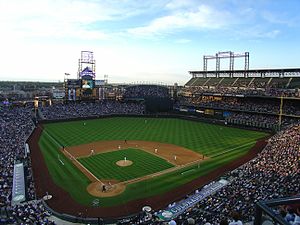Baseball is just around the corner. Pitchers and catchers will report to spring training in a few days. I’ve been looking for a copy of the new collective bargaining agreement (CBA) ever since it was announced that an agreement had been reached. I still can’t find one, but there is a downloadable summary that does give a few more details. I gave my thoughts on the new CBA a few months ago, but here’s an update version based on the details in the summary document. Some of this article will rehash the details of my previous article, but there’s also some new content in this article.
Two wild card teams per league – I hate, hate, hate this idea. One of the things I love about baseball is that it’s very hard to make the playoff. Currently, just 8 of the 30 teams make it. I also hate the one game “coin flip round” of the playoffs, because one game is a very poor judge of which team is better.
Free agency – MLB is finally dropping the Elias rating system for free agents. This was an incredibly flawed system. Among other things, one of the rankings for catchers was related to the number of putouts. A catcher is awarded a putout on a strikeout by the pitcher … so a catcher on a team with a dominant pitching staff would see his ranking artificially inflated. Stats like runs and RBI – heavily dependent on the players around you – were also included, and there was no attempt to normalize statistics for the player’s park.
Additionally, an older, quickly fading player could be a Type A free agent and scare off potentially suitors because of the fact that they’d lose a top pick to sign him (the Braves lost a 1st round pick to the Mets when they signed an aging Tom Glavine. The Mets used the pick to draft Ike Davis).
The new systems awards compensation when a team offers a pending free agent a one year contract worth the average of the top 125 salaries. In other words, you have to demonstrate the player’s value to your team – by putting your money where your mouth is – before being awarded compensation. (Note: under the old system, a team had to offer arbitration to a player, and have the player decline the offer, in order to be eligible for compensation.)
Draft bonuses – My opinion is that a true commissioner should be an unbiased arbiter between the owners and the players. Bud Selig has instead become merely the president of the owner’s group. For years, the commissioner’s office has recommended draft bonus amounts for each slot in the draft. I’ve always chafed at this, because I feel that the free market is a better way to handle this. Beginning this year. there will actually be penalties for going above slot. There will be an amount assigned to each team, based on where their picks fall. This is the amount that can be signed on picks from the first 10 rounds. Exceed this amount by 5%, and you start losing draft picks. If you exceed the amount by 15%, and you lose 1st round picks in the next two drafts.
What baseball is trying to do is avoid having teams with lots of cash to spend (Yankees) have player drop to them because of signability concerns. The core problem here is that teams can’t maximize that value of a pick by trading it. Eli Manning didn’t want to play for the San Diego Chargers. Did the Chargers just skip him because of signability concerns and grab the next player? No, they drafted him and immediately traded his rights. This can’t be done in baseball.
If draft bonuses are going to be capped, then I think it makes sense to reduce the amount of time a player is under a team’s control (currently at least six years).
I think this can have a real impact on dual sports athletes. These players often fall in the draft because a team is taking a risk that they won’t sign, or will choose their other sport over baseball (case in point: Wisconsin quarterback Russell Wilson has announced that he is choosing the NFL over baseball). If often takes extra money to get these players to commit to baseball full-time.
A similar system will be in place for signing of international amateur free agents (but not international professionals, such as Yu Darvish).
The top 200 draft prospects and top 100 international amateur free agents will also be subject to pre-draft drug testing and a pre-draft medical program. The medical program should not be overlooked – this may allow teams to spot undiagnosed medical conditions that could affect a player’s ability to succeed at the major league level.
Competitive balance lottery – Teams that are in the ten smallest markets and teams that have the ten lowest revenues will be entered into a competitive balance lottery. There’s certain to be a lot of overlap in this group, so I’m guessing this will usually be 12-15 teams. A team’s chance of winning a lottery picks is based on their winning percentage (I assume that the teams with the worst records will have the best odds). There will be six lottery picks between the first and second rounds. The non-winners are put into a second lottery for picks between the second and third round.
I’m not sure if post-season revenue is included in the calculation or not. If post-season revenue is included, you might see a team drop out of the lottery by winning a few games down the stretch in October. Conversely, you might see some teams attempt to limit their late season revenue in order to get into the lottery.
As a fan of a small market team (Rockies), I’m not a fan of this idea. A billionaire owner (Mark Cuban, for example) could also turn this idea on its head by purchasing a small market team, grabbing lottery picks as birthright of being a small market team, and then spending freely in free agency. Basically, he could build the Royals into a better version of the Yankees.
Is there anything at all I like about the competitive balance lottery? Sure. You can trade these picks – that’s a step in the right direction.
Do you have any new thoughts on the new CBA?
Are you ready for baseball?
 RSS
RSS




















